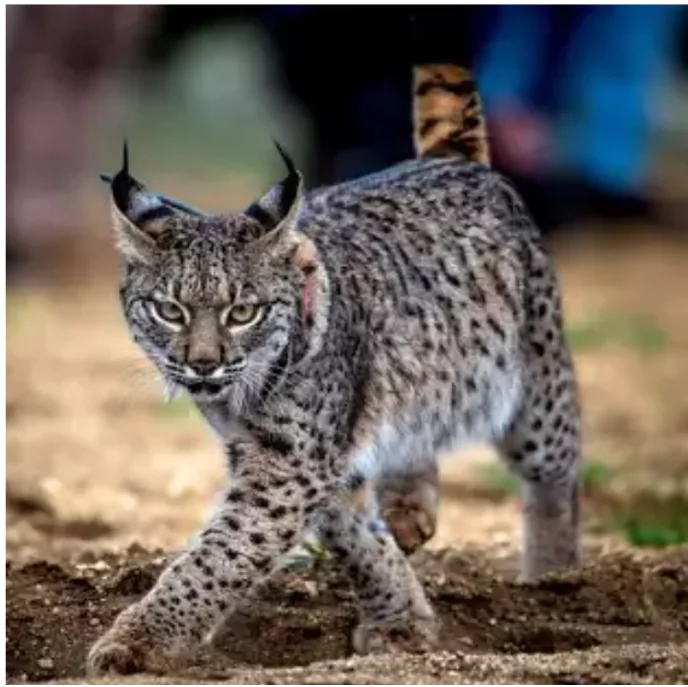Recently, IUCN has changed Iberian lynx’s status to ‘vulnerable’ from ‘endangered’ due to significant improvement in its conservation status.
Population of Lynx
- 2001 Status: In 2001, the lynx population had dwindled to just 62 mature individuals.
- By 2022, the number of mature lynx increased to 648.
 Current status: Including young lynx, the total population is now estimated to be over 2,000.
Current status: Including young lynx, the total population is now estimated to be over 2,000.
About Iberian lynx’s
- Scientific name: Lynx pardinus
- It belongs to cat species and is sexually dimorphic.
- Males are heavier and longer than females.
- Distribution: Spain and Portugal
- Known for: long legs, pointy ears, and leopard-like spotted fur.
Enroll now for UPSC Online Course
| In India, Eurasian lynx is found in the frozen cold desert of Ladakh |
Key strategies to increase conservation of Iberian lynx’s
- Enhancing prey: Increase the population of its primary prey, the Endangered European rabbit (Oryctolagus cuniculus).
- Protection and Restoration of habitat: Protecting and restoring its Mediterranean scrub and forest habitat.
-
- Habitat Expansion: The lynx’s habitat has expanded significantly, now covering at least 3,320 km², up from just 449 km² in 2005.
- Reintroduction: Since 2010, over 400 Iberian lynx have been reintroduced into various areas of Portugal and Spain.
- Minimizing human-caused fatalities.
- Genetic Diversity and Breeding Programs
- Genetic diversity: The diversity of the Iberian Lynx has been improved through translocations.
- An ex-situ breeding program: This program has also been crucial in increasing the population. These both measures played a crucial role in increasing the population of Iberian lynx’s.
Ex-situ breeding program
- Ex situ breeding program aims to protect endangered species outside their natural habitat.
- This involves relocating part of the population to a new, controlled environment similar to their natural habitat, such as zoos or wildlife sanctuaries.
- Significance: Helps increase genetic diversity by carefully selecting mating pairs from different regions.
|
Threats to Iberian lynx’s
Despite the success, several threats remain:
- Virus outbreak: The European rabbit population, crucial for the lynx’s diet, is vulnerable to virus outbreaks.
- Disease due to climate change: The lynx faces diseases from domestic cats, poaching, road accidents, and habitat changes due to climate change
- Other risks: Poaching, illegal hunting, and road accidents still threaten the species’ survival.
Check Out UPSC NCERT Textbooks From PW Store
![]() 21 Jun 2024
21 Jun 2024
 Current status: Including young lynx, the total population is now estimated to be over 2,000.
Current status: Including young lynx, the total population is now estimated to be over 2,000.
